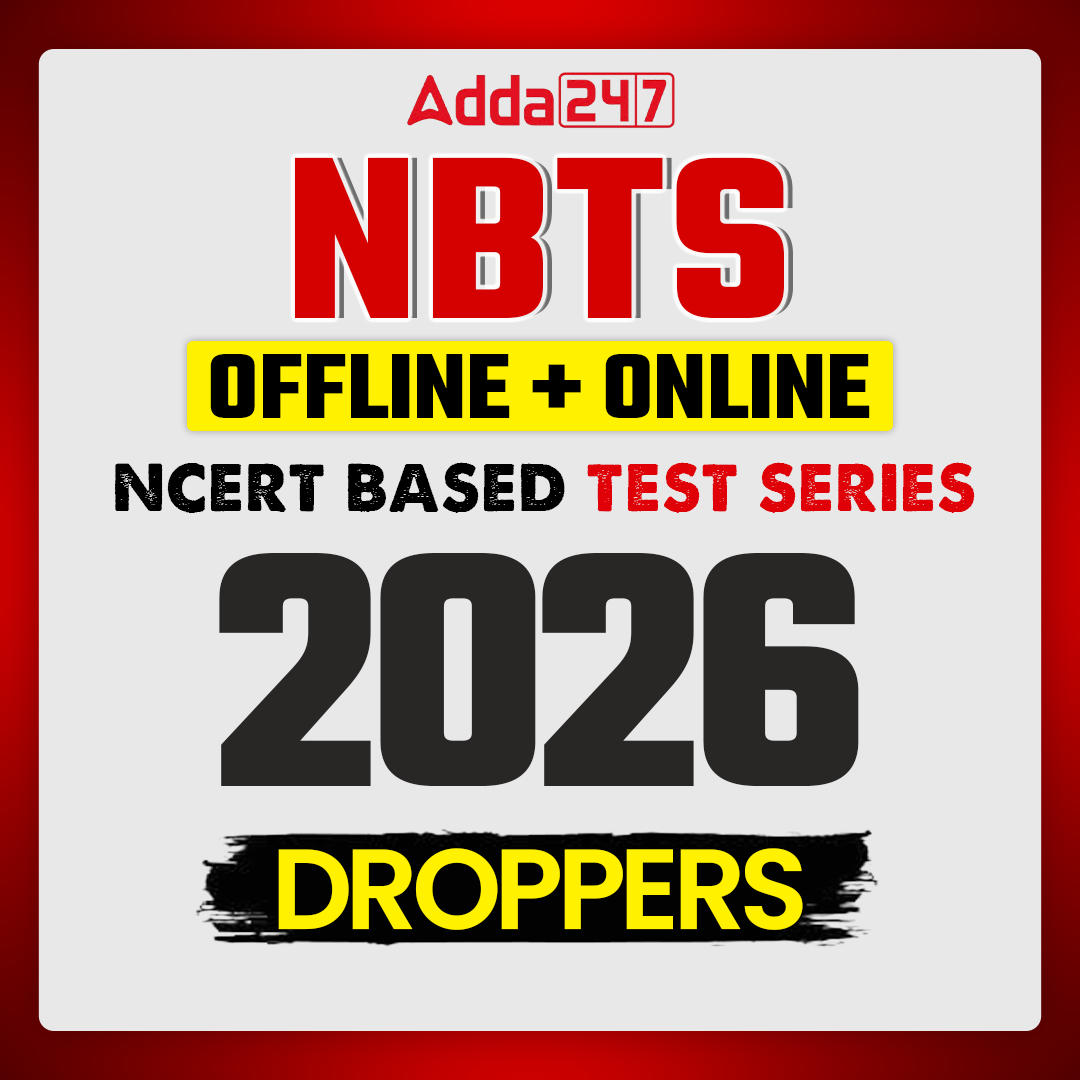
Ncert Solutions for Class 11 Biology Chapter 18 in English
Class 11 Biology NCERT Solutions Chapter 18: Adda 247 provides NCERT Solutions for Class 11 Biology Chapter 18 which is for the students who want to go ahead in life and achieve great marks in their examinations. The NCERT Solutions for class 11 are provided by the teachers who are experts of their subjects. The solutions are set according to the rules formulated by the NCERT class 11 biology and in the language that can be understood by every student. By these reading the solutions students can build up a strong base easily. The NCERT class 11 Biology solutions covers the chapters 1 to 22 with the important questions and the answers in a detailed way.
Examinations can be threatening for some people, a proper learning of the concepts is the key to crack the examination. Students rely on the solutions of the NCERT provided by Adda 247. The solutions are formulated by the experts of the subjects who have tremendous knowledge in their subjects.
These NCERT Solutions of class 11 help the students to get familiarized with the textbooks. The students can access the solutions anywhere while browsing the web easily. The solutions are very precise and accurate.
NCERT Solutions for Class 11 Biology Chapter 18 – Body fluids and circulation
The chapter provides information about Body fluids and circulation. Each and every cell of a multicellular organism require food, oxygen and vital components to survive. Simultaneously as a result of metabolism, cell also produces some useful and waste products. Substances that are useful, are transported to other cells, while harmful or waste substances are removed from the body. Thus, it is essential to have efficient mechanisms to move these substances to and from the cells.
To carry out these processes, a carrier inturn is required by the body cells, providing them with essential components (i.e., food, oxygen, etc) and that helps in the distribution of useful products and elimination of waste products. Thus, circulatory system is formed by the carrier, a fluid medium that circulates throughout the body and fulfils the need of the body cells.
[sso_enhancement_lead_form_manual title=”Download Full PDF of Class 11 Biology Chapter 18 ” button =”Download Now” pdf =”/jobs/wp-content/uploads/2021/06/25020308/English-chapter-18.pdf”]
Important Questions of NCERT Solutions for Class 11 Biology Chapter 18
Question 1. Name the components of the formed elements in the blood and mention one major function of each of them.
Answer: Functions of formed elements of blood are as follows:
(i) Function of Erythrocytes (RBCs): transport of respiratory gases.
(ii) Functions of Leucocytes (WBCs):
Neutrophils and monocytes are phagocytic cells and they destroy foreign materials.
Basophils are involved in inflammatory reactions.
Eosinophils resist infections and are also involved in allergic reactions.
Lymphocytes are responsible for immune response.
(iii) Function of Platelets: Coagulation of blood.
Question 2. What is the importance of plasma proteins?
Answer: Plasma is the colourless fluid of blood which helps in the transport of food, CO2, waste products, and salts. It constitutes about 55% of blood. About 6.8% of the plasma is constituted by proteins such as fibrinogens, globulins, and albumins.
Fibrinogen is a plasma glycoprotein synthesised by the liver. It plays a role in the clotting of blood.
Globulin is a major protein of the plasma. It protects the body against infecting agents.
Albumin is a major protein of the plasma. It helps in maintaining the fluid volume within the vascular space.
Question 3. Match Column I with Column II :
| Column I | Column II |
| (a) Eosinophils | (i) Coagulation |
| (b) RBC | (ii) Universal recipient |
| (c) AB Group | (iii) Resist infections |
| (d) Platelets | (iv) Contraction of heart |
| (e) Systole | (v) Gas transport |
Answer:
| Column I | Column II |
| (a) Eosinophils | (iii) Resist infections |
| (b) RBC | (v) Gas transport |
| (c) AB Group | (ii) Universal recipient |
| (d) Platelets | (i) Coagulation |
| (e) Systole | (iv) Contraction of Heart |
Question 4. Why do we consider blood as a connective tissue?
Answer: We consider blood as connective tissue because of these reasons:
- Connective tissues bind, link or support the other organs of the body.
- They are the most abundant and widely distributed tissue in the body.
- Blood transports gases, nutrients, and hormones from one body organ to the other.
- It flows throughout the body.
- Hence, blood is considered connective tissue.
Question 5. What is the difference between lymph and blood?
Answer:
| Lymph | Blood |
| It consists of plasma, erythrocytes, leucocytes and platelets. | It consists of plasma and leucocytes. |
| It has red colour because of the presence of haemoglobin. | It is colourless as haemoglobin is absent. |
| Plasma has more proteins, calcium and phosphorus. | Plasma has fewer proteins, less calcium and phosphorus. |
| Glucose concentration is less in blood. | Glucose concentration is high. |
Question 6. What is meant by double circulation? What is its significance?
Answer: Double circulation is a process by which blood moves twice through the heart to complete one cycle. It is found in amphibians, reptiles, birds, and mammals. However, it is more prominent in birds and mammals as their heart has four chambers – the right atrium, the right ventricle, the left atrium, and the left ventricle.
The circulation of blood in an organism is divided into two parts:
(i) Systemic circulation
(ii) Pulmonary circulation
Systemic circulation: In this case, the movement of oxygenated blood occur from the left ventricle of the heart to the aorta. Then, blood is carried out through a network of arteries, arterioles, and capillaries to the tissues. From the tissues, the deoxygenated blood is reached to the left auricle through the veins and vena cava.
Pulmonary circulation: In this case, the deoxygenated blood flows from the right ventricle to the pulmonary artery and then carries to lungs for oxygenation. From the lungs, the oxygenated blood is transported via pulmonary veins into the left atrium.
Hence, in double circulation, blood has to pass alternately through the lungs and the tissues.
Significance of double circulation:
Blood is circulated to the body tissues via systemic circulation and to the lungs by pulmonary circulation.
Question 7. Write the differences between:
(a) Blood and Lymph
(b) Open and Closed system of circulation
(c) Systole and Diastole
(d) P-wave and T-wave
Answer:
(a) Blood and lymph
| Lymph | Blood |
| It consists of plasma, erythrocytes, leucocytes and platelets. | It consists of plasma and leucocytes. |
| It has red colour because of the presence of haemoglobin. | It is colourless as haemoglobin is absent. |
| Plasma has more proteins, calcium and phosphorus. | Plasma has fewer proteins, less calcium and phosphorus. |
| Glucose concentration is less in blood. | Glucose concentration is high. |
(b) Open and closed system of circulation
| Open system of circulation | Closed system of circulation |
| In this system, blood is pumped by the heart, through large vessels, into body cavities called sinuses. | In this system, blood is pumped by the heart, through a closed network of vessels. |
| The body tissues are in direct contact with blood. | The body tissues are not in direct contact with blood. |
| Blood flows at low pressure. Hence, it is a slower and less efficient system of circulation. | Blood flows at high pressure. Hence, it is a faster and more efficient system of circulation. |
| The flow of blood is not regulated through the tissues and organs. | The flow of blood can be regulated by valves. |
| This system is present in arthropods and molluscs. | This system is present in annelids, echinoderms, and vertebrates. |
(c) Systole and diastole
| Systole | Diastole |
| It is the contraction of the heart chambers to drive blood into the aorta and the pulmonary artery. | It is the relaxation of the heart chambers between two contractions. During diastole, the chambers are filled with blood. |
| Systole decreases the volume of the heart chambers and forces the blood out of them. | Diastole brings the heart chambers back into their original sizes to receive more blood. |
(d) P-wave and T-wave
| P-Wave | T-Wave |
| In an electrocardiogram (ECG), the P-wave indicates the activation of the SA node. | In an electrocardiogram (ECG), the T-wave represents ventricular relaxation. |
| During this phase, the impulse of contraction is generated by the SA node, causing atrial depolarisation. | During this phase, the ventricles relax and return to their normal state. |
| It is of atrial origin. | It is of ventricular origin. |
Question 8. Describe the evolutionary change in the pattern of heart among the vertebrates
Answer: The heart among the vertebrates show different patterns of evolution. Different groups of
animals have evolved different methods for this transport. All vertebrates possess a muscular chambered heart.
(i) Fishes have a two-chambered heart with an atrium and a ventricle. The heart pumps out deoxygenated blood which is oxygenated by the gills and supplied to the body parts from where
deoxygenated blood is returned to the heart.
(ii) Amphibians and the reptiles (except crocodiles) have a three-chambered heart with two atria and a single ventricle. The left atrium receives oxygenated blood from the gills/lungs/skin and the right
atrium gets the deoxygenated blood from other body parts. However, they get mixed up in the single ventricle which pumps out mixed blood.
(iii) Crocodiles, birds and mammals possess a four-chambered heart with two atria and two
ventricles. Oxygenated and deoxygenated blood received by the left and right atria respectively passes on to the ventricles of the same sides. The ventricles pump it out without any mixing up, i.e., two separate circulatory pathways are present in these organisms, hence, these animals have double circulation.
Question 9. Why do we call our heart myogenic?
Answer: In the human heart, contraction is initiated by a special modified heart muscle known as sinoatrial node. It is located in the right atrium. The SA node has the inherent power of generating a wave of contraction and controlling the heartbeat. Hence, it is known as the pacemaker. Since the heart beat is initiated by the SA node and the impulse of contraction originates in the heart itself, the human heart is termed myogenic. The hearts of vertebrates and molluscs are also myogenic.
Question 10. Sino-atrial node is called the pacemaker of our heart. Why?
Answer: The sino-atrial (SA) node is a specialised bundle of neurons located in the upper part of the right atrium of the heart. The cardiac impulse originating from the SA node triggers a sequence of electrical events in the heart, thereby controlling the sequence of muscle contraction that pumps blood out of the heart. Since the SA node initiates and maintains the rhythmicity of the heart, it is known as the natural pacemaker of the human body.
Features of the NCERT Solutions for Class 11 Biology Chapter 18 – Body fluids and circulation
NCERT Solutions of class 11 have been answered based on the important information on the question.
- The columns are used wherever necessary.
- Solutions are solved point wise and accurately answered point to point.
Frequently Asked Questions on NCERT Solutions for Class 11 Biology Chapter 18
What are the advantages of referring NCERT Solutions for class 11 Biology chapter 18?
Students referring the NCERT Solutions of class 11 by Adda 247 find the solutions helpful during the exams. The solutions are prepared by the experts in an interactive manner keeping in mind the students. The students’ perspective is kept in mind while preparing the solutions. It helps in completing the syllabus on time and also provides notes for the revision prior to the exam.
What are the advantages of referring NCERT in competitive exams like JEE and AIPMT?
Most of the competitive exams like NEET, JEE etc. follow the basic NCERT books for designing their question papers. NCERT serves as the base for every book prepared for NEET and JEE. The competitive exams are based on the CBSE syllabus applied in XI and XII classes and NCERT books strictly follow CBSE syllabus. In addition to this, NCERT books play an important role in clearing out the theoretical concepts. Every topic given in NCERT books is explained in such a way to help students make their basics and fundamentals strong and clear.
How to read NCERT books more efficiently?
Given below are the important points which must be followed while reading the NCERT books in an efficient manner:
Go through each topic thoroughly by understanding the meaning and significance of each line mentioned in that particular topic.
Ask your teacher if any doubts.
Note down the important topics to revise at the time of examination.
Solve all the exercise questions given at the end of each chapter. These questions are important for understanding the concepts in a better way.
Is it mandatory to solve all the NCERT questions mentioned at the end of each chapter?
The questions and answers mentioned in NCERT textbooks at the end of each chapter are quite important not only for examination but also for understanding the concepts in a better way. These questions aim to test the students’ understanding and learning over the topics that they have learned in the chapter.
Solving the NCERT exercise problems will help to
- clear all the concepts and formulae you learned in a chapter
- get comfortable with different types of questions that might be asked in exams
- get enough practice which is key to succeed in Mathematics exam
- improve your accuracy and speed
What are the important concepts covered in the Chapter 18 of NCERT Solutions for Class 11 Biology?
The concepts involved in the chapter 9 of NCERT Solutions are –
18.1 – Blood
18.2 – Lymph (Tissue Fluid)
18.3 – Circulatory Pathways
18.4 – Double Circulation
18.5 – Regulation of Cardiac Activity
18.6 – Disorders of Circulatory System
These concepts are created by the faculty at Adda 247. The solutions are available at Adda 247 in the PDF format which can be downloaded by the students.








 HPBOSE Compartment Date Sheet 2025 Out, ...
HPBOSE Compartment Date Sheet 2025 Out, ...
 RUHS Counselling 2025 Round 1 Seat Allot...
RUHS Counselling 2025 Round 1 Seat Allot...
 Bihar Board Dummy Registration Card 2026...
Bihar Board Dummy Registration Card 2026...










